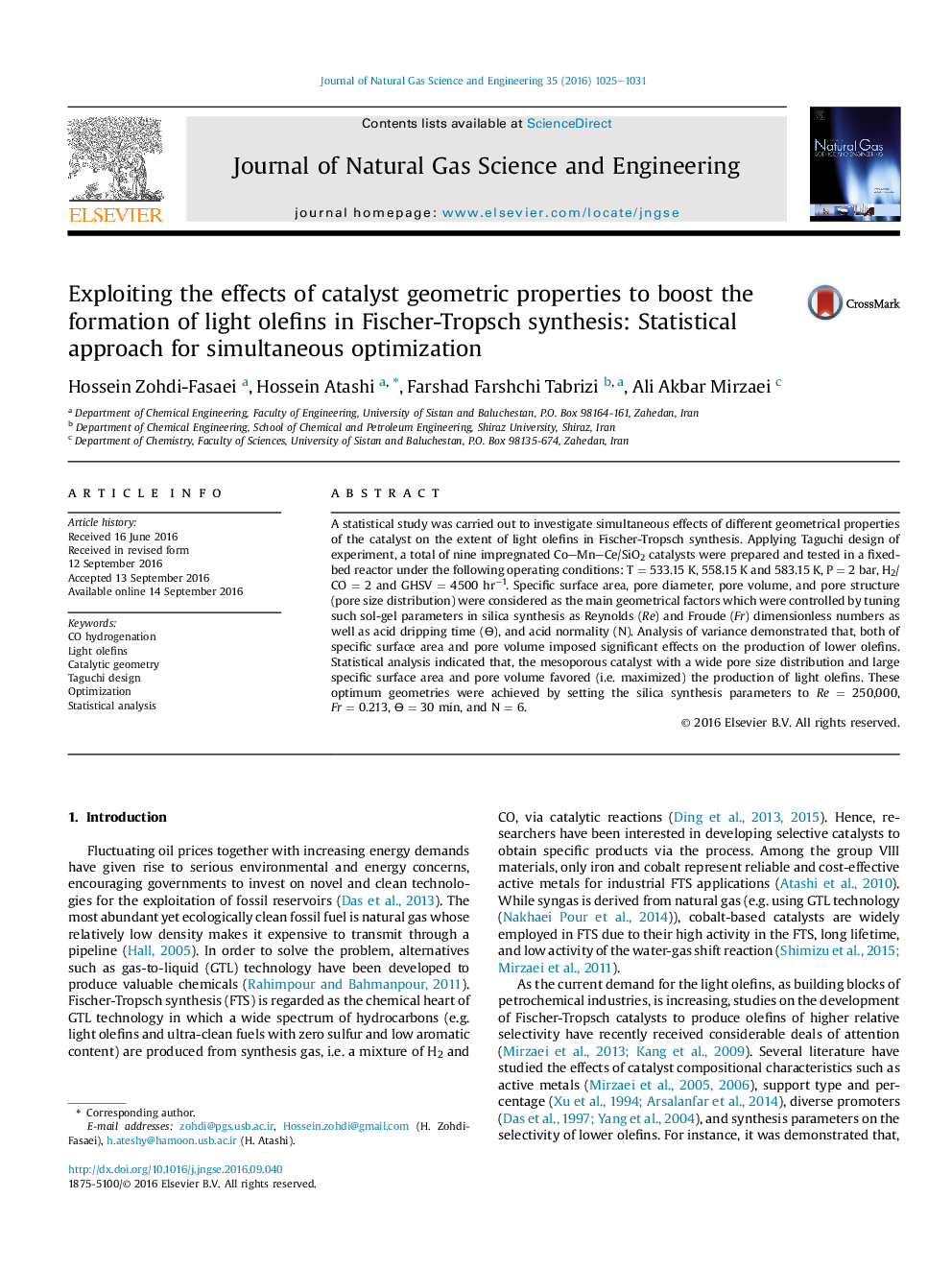| Article ID | Journal | Published Year | Pages | File Type |
|---|---|---|---|---|
| 6481607 | Journal of Natural Gas Science and Engineering | 2016 | 7 Pages |
â¢Catalyst geometry was controlled by tuning sol-gel mixing parameters in silica synthesis.â¢Specific surface area and pore volume imposed significant effects on the production of lower olefins.â¢Wide pore size distribution, large specific surface area and pore volume maximized the production of light olefins.â¢Optimum geometries were achieved by setting the silica synthesis parameters to Re = 250,000, Fr = 0.213, Ө = 30 min and N = 6.
A statistical study was carried out to investigate simultaneous effects of different geometrical properties of the catalyst on the extent of light olefins in Fischer-Tropsch synthesis. Applying Taguchi design of experiment, a total of nine impregnated CoMnCe/SiO2 catalysts were prepared and tested in a fixed-bed reactor under the following operating conditions: T = 533.15 K, 558.15 K and 583.15 K, P = 2 bar, H2/CO = 2 and GHSV = 4500 hrâ1. Specific surface area, pore diameter, pore volume, and pore structure (pore size distribution) were considered as the main geometrical factors which were controlled by tuning such sol-gel parameters in silica synthesis as Reynolds (Re) and Froude (Fr) dimensionless numbers as well as acid dripping time (Ó¨), and acid normality (N). Analysis of variance demonstrated that, both of specific surface area and pore volume imposed significant effects on the production of lower olefins. Statistical analysis indicated that, the mesoporous catalyst with a wide pore size distribution and large specific surface area and pore volume favored (i.e. maximized) the production of light olefins. These optimum geometries were achieved by setting the silica synthesis parameters to Re = 250,000, Fr = 0.213, Ө = 30 min, and N = 6.
Graphical abstractDownload high-res image (188KB)Download full-size image
